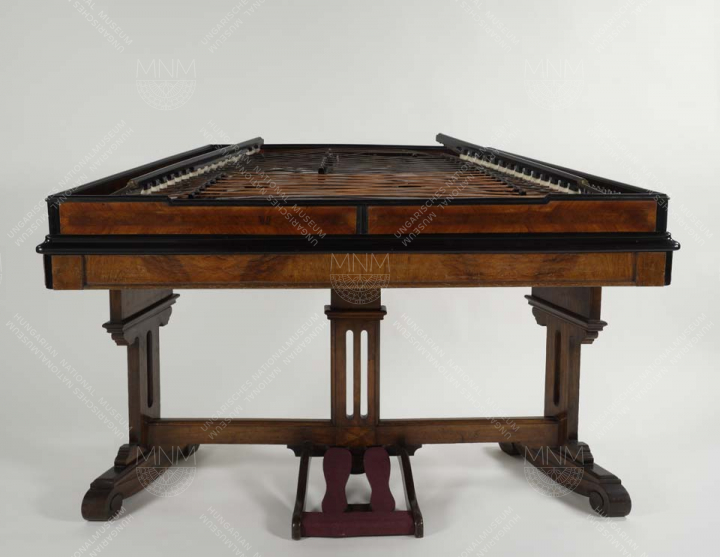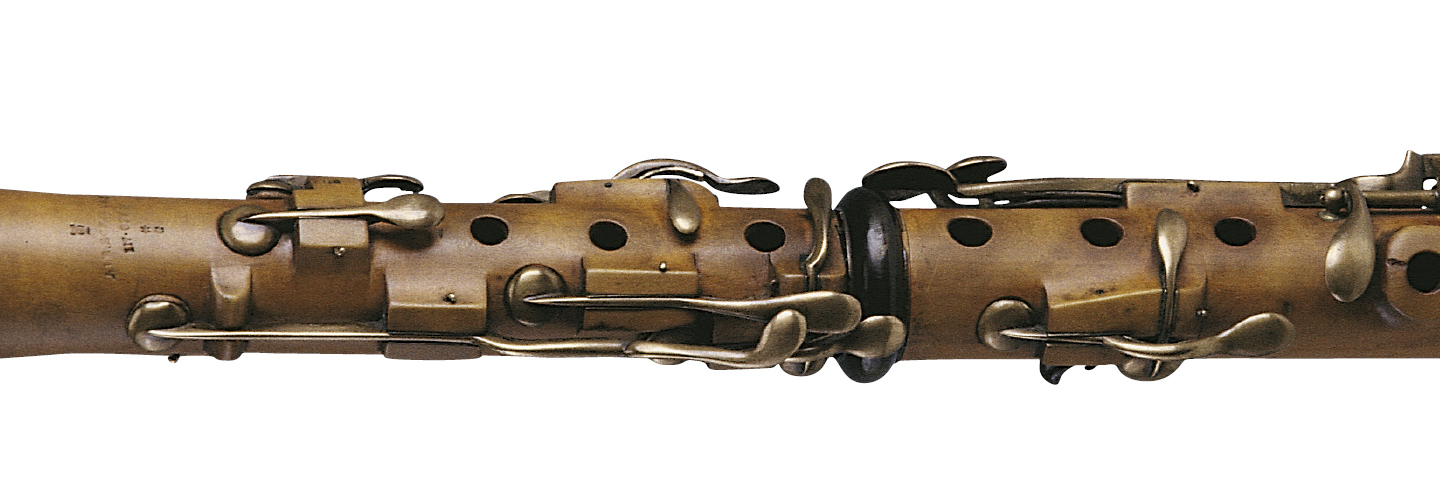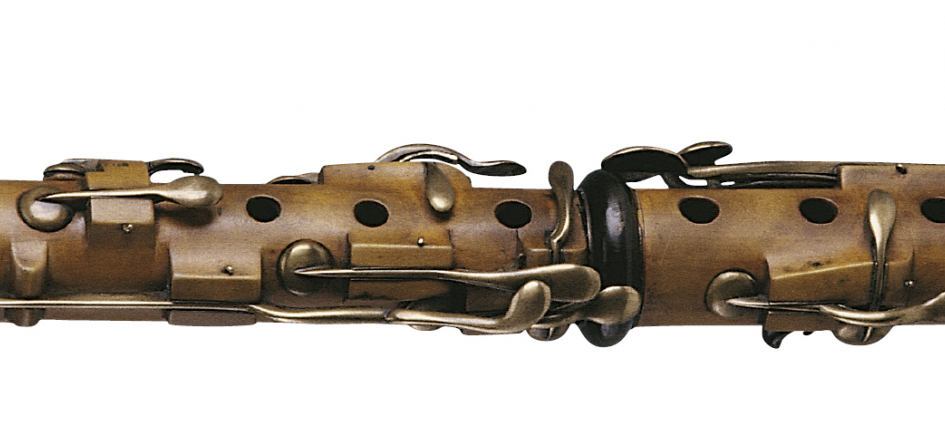
The Historical repository
The Historical repository short description
The foundations of the Musical Collection were set up by three prominent pieces in the middle of the 19th century. A virginal, bought in 1836 from the Jankovich Collection as an instrument belonging to Princess Katalin Brandenburgi; a harpsichord from the Thököly family, which was received in 1847 as a gift by our museum and a harp attributed to French Queen, Marie-Antoinette, which also arrived to the museum in 1852 as a donation. After that, most musical instruments were donated to the museum. In 1902 the arrival of the Delhaes legacy was a significant gain, when at the same time 50 valuable instruments were added to the collection of artworks. Although instruments of European interest had been included in the collection of the museum (the Broadwood pianos of Beethoven and Liszt, the Stadlmann-baryton belonging to Haydn and Miklós Esterházy, the first pedal cymbalo of Vencel József Schunda's, (oboe-like) shawms (Hungarian double reed instruments), etc. a separate music collection was only created in 1957. Items coming from the Hungarian musical instrument production and musical instruments related to historical personalities or families are also added. The collection of instruments holds a great many types of objects, their systematization and grouping follows the general scientific division. According to this, the Hungarian National Museum preserves idiophone (e.g. xylophone, glass harmonica), membranophone (drums, mirliton), aerophone (wind instruments, organ, harmonium), chordophone (strings) and mechanical (music box, network) instruments. In addition, there are other artwork related to music such as music recks, tuner keys, instrument making tools, etc.
 6
6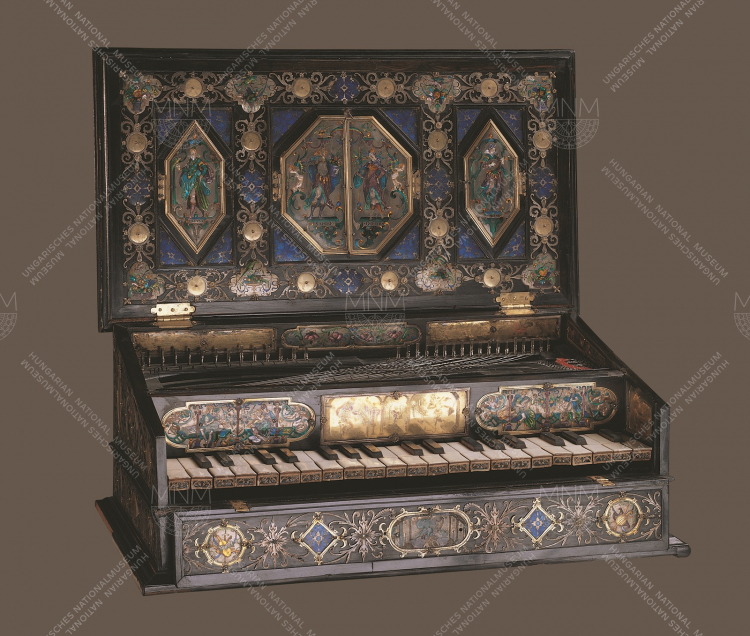
Virginal
South Germany (Augsburg?), 1617
black painted wooden corpus, topped with a red velvet cushion, with enamel and gilded silver plate decoration
Wooden box decorated with goldsmith’s work, covered with a sloping lid and a red (originally green) velvet pillow, with drawers under it. Inside the box one can admire the allegorical enamel portraits of the seven free arts and four seasons. From left to right: Tactus (Touch), Sapore (Taste), Odor (Smell) and Auditus (Heraing). There are some biblical scenes behind the representation of the senses, a signature under Auditus (LKI IKF) and the year (1617). Above the keys, "OMNIS SPIRITUS LAUDET DOMINUM" („Every soul praises the Lord”) and the "SIC TRANSIT GLORIA MUNDI" („Thus passes the glory of the world”).
The museum purchased this item from the collection of Miklós Jankovich as a musical instrument owned by Katalin Brandenburgi (second wife of Gábor Bethlen, Prince of Transylvania). The instrument's construction and written sources also indicate that had been truly a princely property.
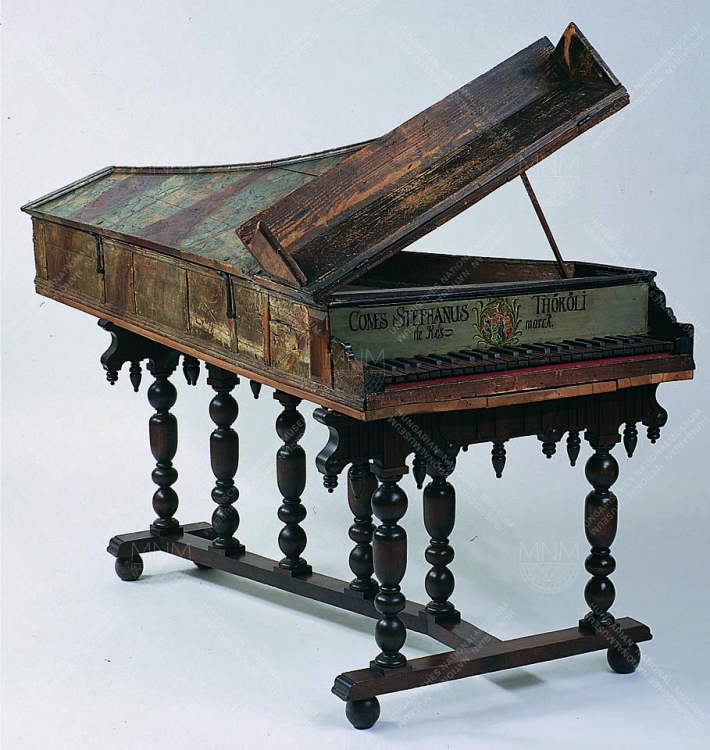
Harpsichord
cca 1600
Probably it belonged to István Thököly (1581-1652) (father of Imre Thököly), supposedly made by Vitus Trasuntinus, a Venetian master. Thököly went to Italy around 1600 to study at the University of Padua. In compliance with the curriculum of the era Italian studies and musical studies were the usual way of educating the distinguished young people – thus he certainly bought the instrument at that time. The original outer case of the instrument and the master mark unfortunately did not survive. The current painting and the transformations were made on the family estate, Árva. On the front of the instrument you can see the coat of arms of the Thököly family and the word COMES STEPHANUS THÖKÖLI de Kesmarck.
The artwork was given as a gift to the collection of the National Museum in 1847.
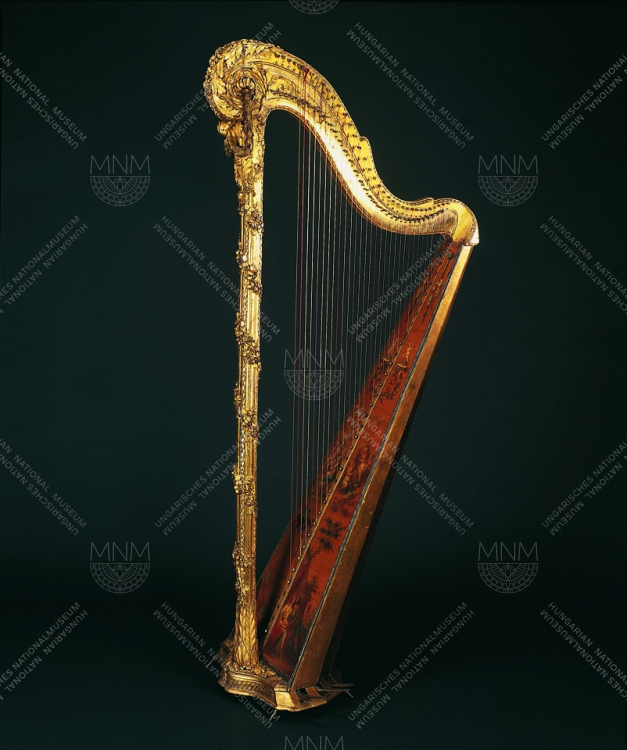
Harp
master mark: COUSINEAU RUE DES POULIS
cca 1770-1780
According to tradition and coming from probably reliable data, the „Golden Harp” belonged to Queen Marie-Antoinette, wife of Louis XVI. It is a gilded and carved instrument, its corpus painted with paintings: Venus flirting with Mars, the child Amor trying on the helmet of the God of War and Vulcanus working in the background. Master Cousineau is one of the most important instrumentalists of the age, subcontractor of the French king, the person perfecting the pedal mechanic of some musical instruments. The harp has 35 strings and its seven pedals can be used for tuning during play without the help of the hands.
It was a gift to the museum. The original donating documents were destroyed during the Second World War, but according to the memoir of the era, the wife of Count Móric Benyovszky (King of Madagascar, who lived for a longer period in the French royal court) received it as a gift from the Queen herself. Later her family donated it to our museum in an adventurous way.
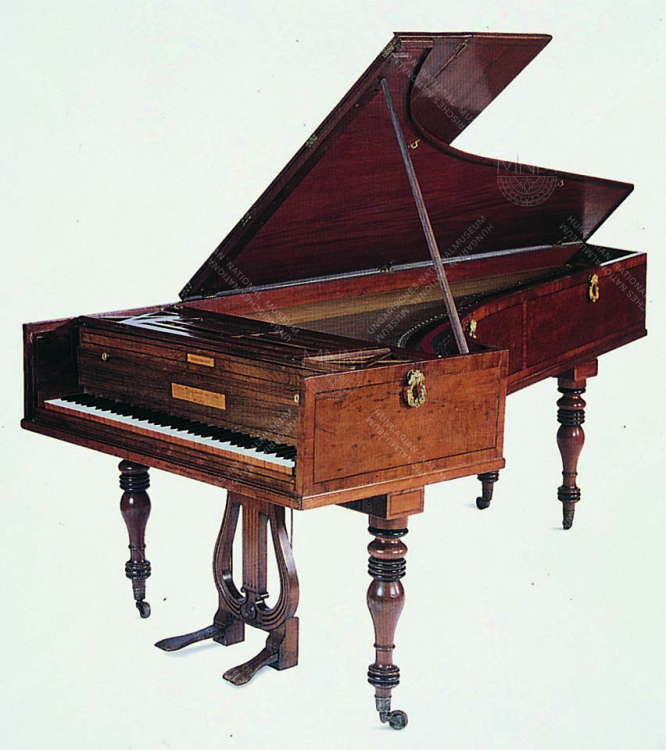
Piano
by Thomas Broadwood, London, 1817
In May 1887 the most esteemed objects of the artist Ferenc Liszt arrived in the National Museum according to his will. The most famous artifact of the Liszt-legacy in all respects was Thomas Broadwood's piano from Vienna that had been given to Beethoven in 1817.
The Broadwood Company, located in London, donated its most modern, best piano, whose name, and the gift it was London, given on the front of the instrument. Beethoven was very fond of this instrument and used it until his death. After that, his belongings were sold out, and the piano was bought by C. A. Spina, a Viennese art dealer, who gave his Liturcy in 1845 as a sign of worship. His 50th anniversary artistic anniversary was celebrated in 1873, and he decided to offer his most valuable souvenirs to the National Museum as a Hungarian patriot, "who is proud to offer his little artistic talent to Hungarians," wrote Ferenc Pulszky.
Finally, after the death of Ferenc Liszt, the instrument went to the museum where it was exhibited with other relics in September 1887 and has since become one of the most treasured objects of the museum.
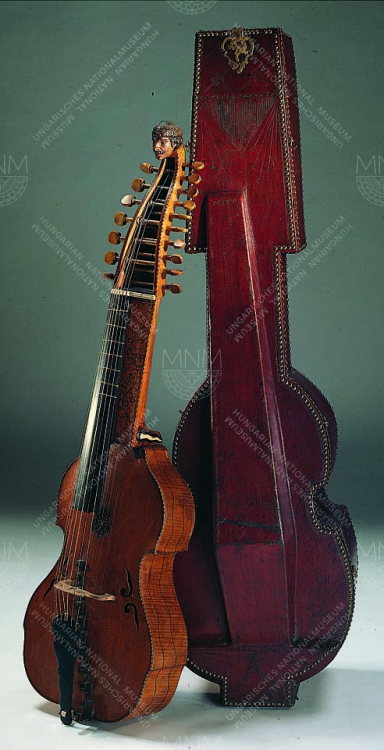
Baryton
master mark: JOHANN JOSEPH STADLMANN KAISERL. Königl. HOF LAUTEN UND GEIGEN MACHER IN WIENN 1750.
Baryton was a very difficult instrument for the Gambas family, and was used for a relatively short period of time and in a fairly narrow circle, only in Southern Germany and Hungary it was fashionable.
The historical value of the instrument of the Hungarian National Museum is given by the fact that Esterházy Miklós "Fényes" (1714-1790) has ever played him, and he has probably commissioned Ioann Joseph Stadlmann of Imperial and Royal court lance and violin maker in Vienna in 1750. His music history was thanks to Joseph Haydn, who composed dozens of pieces for this instrument, making this rare instrument a significant literary.
The exterior of the instrument is artistically crafted. Its head is the most characteristic: it shows a mustache and Hungarian glasses. The monograph I S refers to the master craftsman.
It is extremely rare for the instrument to have its original case, a solid red leather covered with gold-plated rivets, and probably due to the fact that the instrument remained intact.

Cymbalo
master mark: Schunda V. József
Pest, 1874
simple, brown-colored instrument, Vencel József Schunda’s first pedal cymbalo
In the history of the Hungarian instrument production, the origins of the Schunda company go back to the 1840s when the Czech-born Josef Schunda became the assistant of Keresztély Juul in Pest. After Juul’s death he married his widow and continued his business. He instructed his younger brothers, and the most talented, József Vencel (1845-1923), who was both a businessman and an instrumentist, was able to make the family workshop thrive. He became an imperial and royal subcontractor and invented such items as the as pedal symbalo (1874) and the modern schwarm. With his products he regularly participated in world exhibitions, his instruments became more and more sought after, and in 1900 he sold the 10 000th copy of his pedal cymbalo.
As a Hungarian patriot, he felt obliged to give the first copy of the patented cymbalo to the National Museum.
Virginal
South Germany (Augsburg?), 1617
black painted wooden corpus, topped with a red velvet cushion, with enamel and gilded silver plate decoration
Wooden box decorated with goldsmith’s work, covered with a sloping lid and a red (originally green) velvet pillow, with drawers under it. Inside the box one can admire the allegorical enamel portraits of the seven free arts and four seasons. From left to right: Tactus (Touch), Sapore (Taste), Odor (Smell) and Auditus (Heraing). There are some biblical scenes behind the representation of the senses, a signature under Auditus (LKI IKF) and the year (1617). Above the keys, "OMNIS SPIRITUS LAUDET DOMINUM" („Every soul praises the Lord”) and the "SIC TRANSIT GLORIA MUNDI" („Thus passes the glory of the world”).
The museum purchased this item from the collection of Miklós Jankovich as a musical instrument owned by Katalin Brandenburgi (second wife of Gábor Bethlen, Prince of Transylvania). The instrument's construction and written sources also indicate that had been truly a princely property.
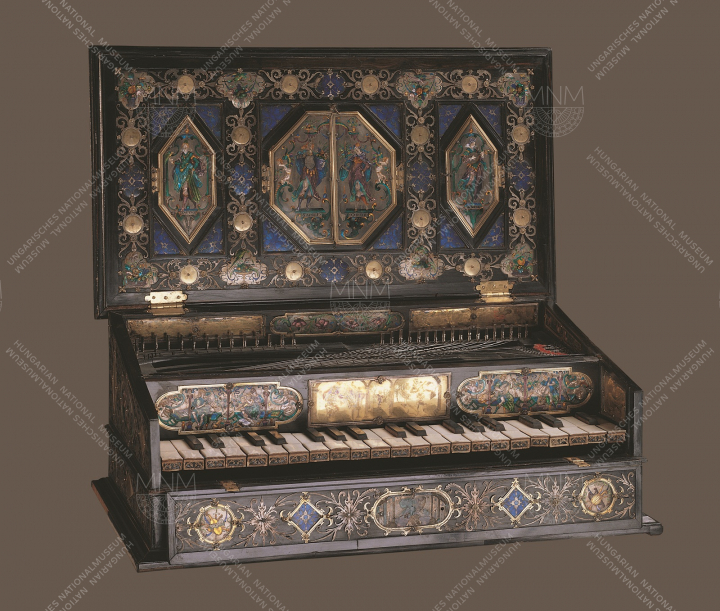
Harpsichord
cca 1600
Probably it belonged to István Thököly (1581-1652) (father of Imre Thököly), supposedly made by Vitus Trasuntinus, a Venetian master. Thököly went to Italy around 1600 to study at the University of Padua. In compliance with the curriculum of the era Italian studies and musical studies were the usual way of educating the distinguished young people – thus he certainly bought the instrument at that time. The original outer case of the instrument and the master mark unfortunately did not survive. The current painting and the transformations were made on the family estate, Árva. On the front of the instrument you can see the coat of arms of the Thököly family and the word COMES STEPHANUS THÖKÖLI de Kesmarck.
The artwork was given as a gift to the collection of the National Museum in 1847.
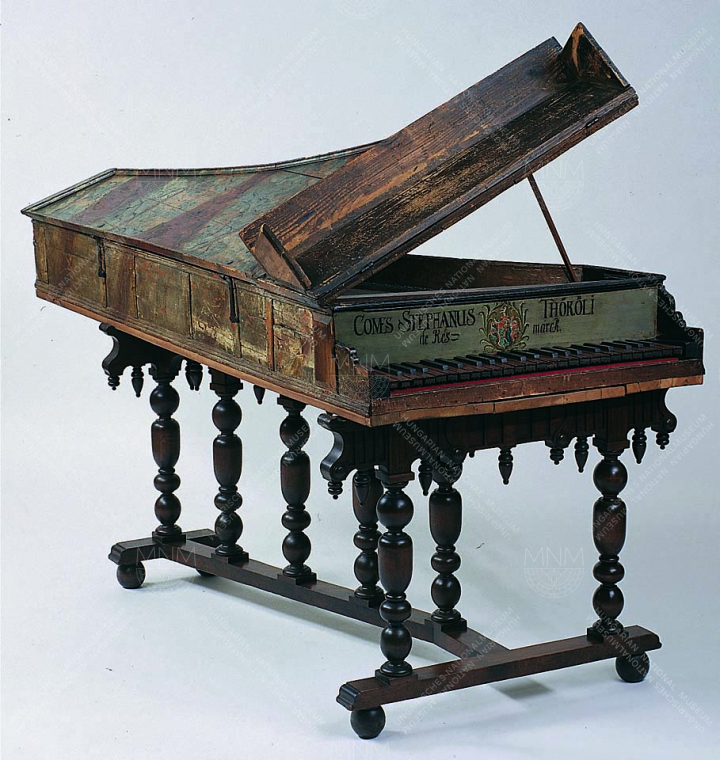
Harp
master mark: COUSINEAU RUE DES POULIS
cca 1770-1780
According to tradition and coming from probably reliable data, the „Golden Harp” belonged to Queen Marie-Antoinette, wife of Louis XVI. It is a gilded and carved instrument, its corpus painted with paintings: Venus flirting with Mars, the child Amor trying on the helmet of the God of War and Vulcanus working in the background. Master Cousineau is one of the most important instrumentalists of the age, subcontractor of the French king, the person perfecting the pedal mechanic of some musical instruments. The harp has 35 strings and its seven pedals can be used for tuning during play without the help of the hands.
It was a gift to the museum. The original donating documents were destroyed during the Second World War, but according to the memoir of the era, the wife of Count Móric Benyovszky (King of Madagascar, who lived for a longer period in the French royal court) received it as a gift from the Queen herself. Later her family donated it to our museum in an adventurous way.
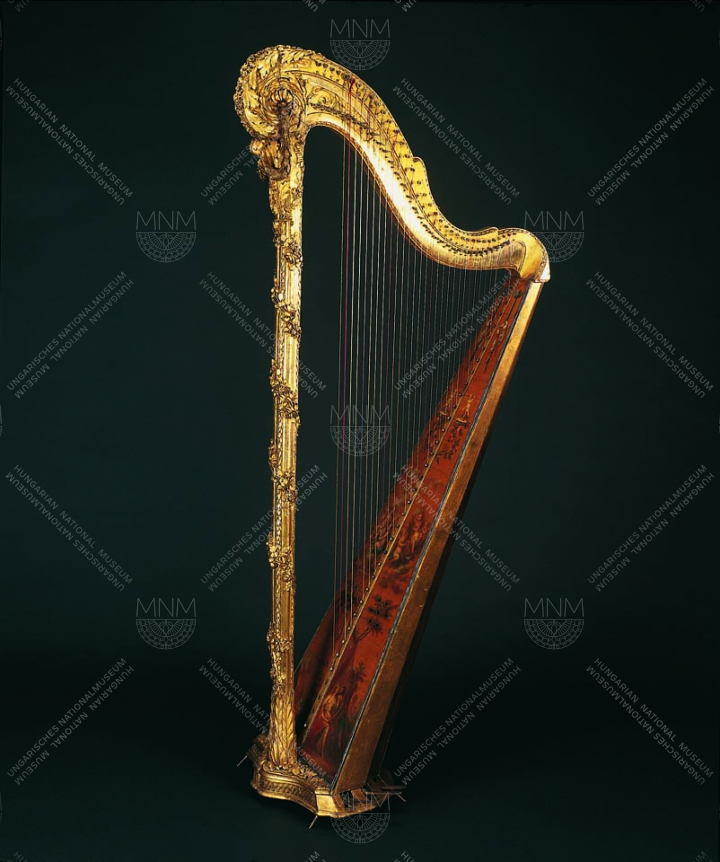
Piano
by Thomas Broadwood, London, 1817
In May 1887 the most esteemed objects of the artist Ferenc Liszt arrived in the National Museum according to his will. The most famous artifact of the Liszt-legacy in all respects was Thomas Broadwood's piano from Vienna that had been given to Beethoven in 1817.
The Broadwood Company, located in London, donated its most modern, best piano, whose name, and the gift it was London, given on the front of the instrument. Beethoven was very fond of this instrument and used it until his death. After that, his belongings were sold out, and the piano was bought by C. A. Spina, a Viennese art dealer, who gave his Liturcy in 1845 as a sign of worship. His 50th anniversary artistic anniversary was celebrated in 1873, and he decided to offer his most valuable souvenirs to the National Museum as a Hungarian patriot, "who is proud to offer his little artistic talent to Hungarians," wrote Ferenc Pulszky.
Finally, after the death of Ferenc Liszt, the instrument went to the museum where it was exhibited with other relics in September 1887 and has since become one of the most treasured objects of the museum.
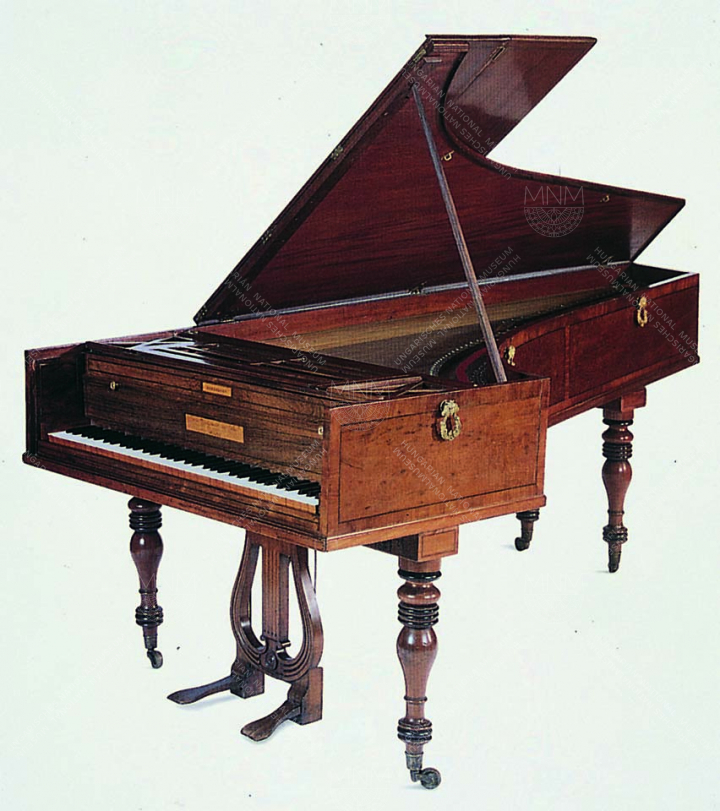
Baryton
master mark: JOHANN JOSEPH STADLMANN KAISERL. Königl. HOF LAUTEN UND GEIGEN MACHER IN WIENN 1750.
Baryton was a very difficult instrument for the Gambas family, and was used for a relatively short period of time and in a fairly narrow circle, only in Southern Germany and Hungary it was fashionable.
The historical value of the instrument of the Hungarian National Museum is given by the fact that Esterházy Miklós "Fényes" (1714-1790) has ever played him, and he has probably commissioned Ioann Joseph Stadlmann of Imperial and Royal court lance and violin maker in Vienna in 1750. His music history was thanks to Joseph Haydn, who composed dozens of pieces for this instrument, making this rare instrument a significant literary.
The exterior of the instrument is artistically crafted. Its head is the most characteristic: it shows a mustache and Hungarian glasses. The monograph I S refers to the master craftsman.
It is extremely rare for the instrument to have its original case, a solid red leather covered with gold-plated rivets, and probably due to the fact that the instrument remained intact.
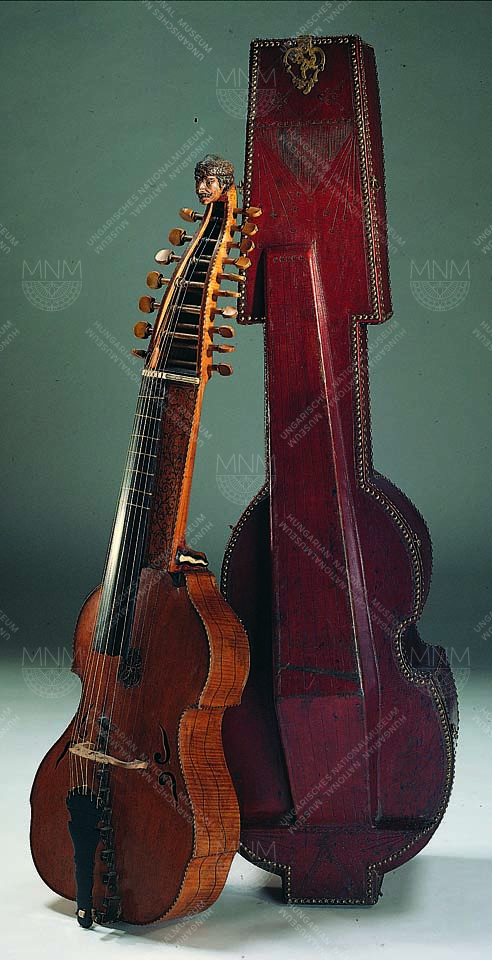
Cymbalo
master mark: Schunda V. József
Pest, 1874
simple, brown-colored instrument, Vencel József Schunda’s first pedal cymbalo
In the history of the Hungarian instrument production, the origins of the Schunda company go back to the 1840s when the Czech-born Josef Schunda became the assistant of Keresztély Juul in Pest. After Juul’s death he married his widow and continued his business. He instructed his younger brothers, and the most talented, József Vencel (1845-1923), who was both a businessman and an instrumentist, was able to make the family workshop thrive. He became an imperial and royal subcontractor and invented such items as the as pedal symbalo (1874) and the modern schwarm. With his products he regularly participated in world exhibitions, his instruments became more and more sought after, and in 1900 he sold the 10 000th copy of his pedal cymbalo.
As a Hungarian patriot, he felt obliged to give the first copy of the patented cymbalo to the National Museum.
